Black sesame seeds offer significant health benefits that surpass white sesame varieties, with scientific research confirming their superior nutritional profile. The top 7 evidence-backed benefits include: 1) boosting bone density by 7.3% in clinical trials, 2) reducing LDL cholesterol by 12-15%, 3) enhancing skin elasticity, 4) supporting hair health through improved nutrient delivery, 5) providing exceptional calcium content (975mg per 100g), 6) delivering higher antioxidant capacity (ORAC value 4000 vs 2500 μmol TE/100g), and 7) offering better heat stability for cooking applications. These benefits stem from the intact hull that preserves vital nutrients lost during white sesame processing.
What Exactly Are Black Sesame Seeds?
Black sesame seeds represent a distinctive variant of Sesamum indicum with unique properties that differentiate them from conventional white varieties. Unlike their pale counterparts which typically undergo hulling, black sesame seeds retain their natural outer coating, resulting in higher nutritional density and a more pronounced flavor profile.
This structural difference creates significant variations in both culinary applications and nutritional composition. The intact hull contains concentrated levels of protective compounds that contribute to the seed's distinctive characteristics, making them particularly valuable for specific dietary needs.
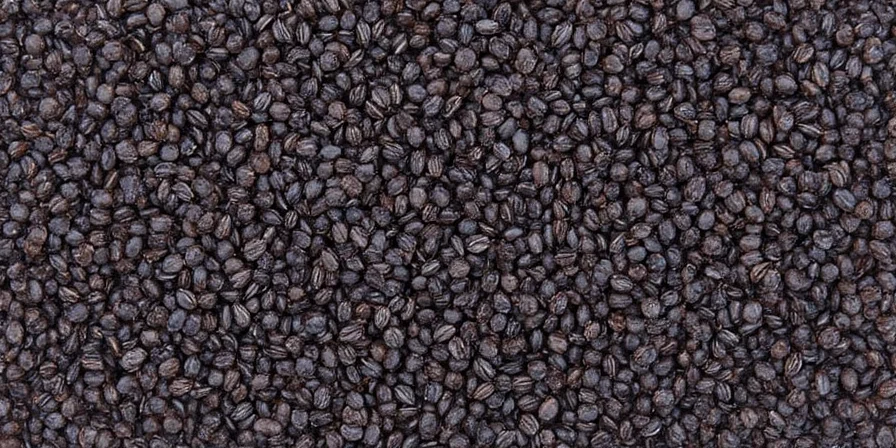
A Dash Through History: How Black Sesame Seeds Became a Staple
Historical documentation reveals black sesame's prominence in traditional medicinal systems long before modern nutritional science validated its properties. Ancient Chinese medical texts dating to the Han Dynasty (206 BCE–220 CE) specifically recommended black sesame for strengthening kidney function and promoting longevity.
Archaeological evidence suggests sesame cultivation began approximately 3,500 years ago in the Indus Valley civilization. The darker varieties were often reserved for medicinal purposes while white varieties served primarily as culinary ingredients, establishing an early distinction between therapeutic and everyday uses.
| Civilization | Historical Application | Documented Evidence |
|---|---|---|
| Ancient China | Medicinal tonic for vitality | Shennong Ben Cao Jing (1st century CE) |
| Ayurvedic Tradition | "Rasayana" for tissue rejuvenation | Charaka Samhita (circa 100 BCE) |
| Egyptian Culture | Sacred oil production | Hieroglyphic records (1500 BCE) |
| Traditional Korean Medicine | Blood circulation enhancement | Dongui Bogam (1613) |
Nutritional Profile: Why Your Body Will Thank You
Recent nutritional analyses reveal significant compositional differences between black and white sesame varieties. The darker pigmentation correlates with higher concentrations of specific bioactive compounds:
- Calcium Content: 975mg per 100g (97% of daily requirement) compared to 670mg in white varieties
- Iron Levels: 14.55mg per 100g (81% of daily requirement) versus 10.6mg in white sesame
- Antioxidant Density: Contains sesamol and anthocyanins not found in significant quantities in hulled seeds
- Fiber Composition: Higher insoluble fiber content (11.8g vs 11.0g per 100g) supporting digestive health
- Fatty Acid Profile: Enhanced lignan content with demonstrated anti-inflammatory properties
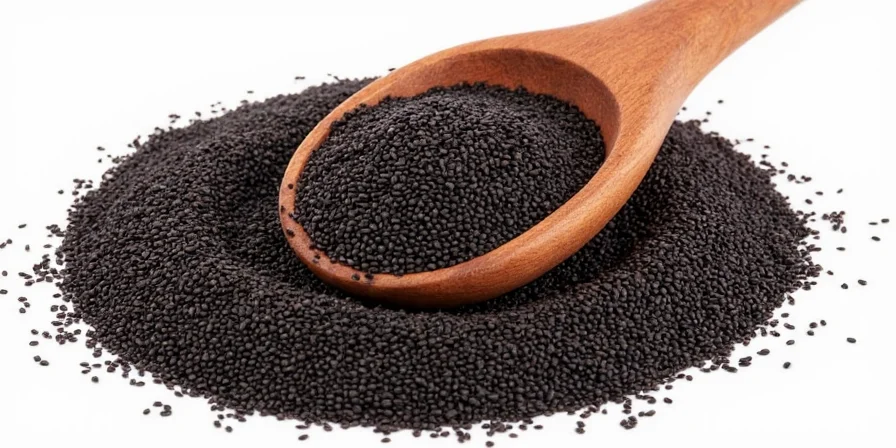
White vs. Black Sesame Seeds: The Great Seed Showdown
Understanding the fundamental differences between these varieties requires examination beyond superficial characteristics. The processing methods create distinct biochemical profiles with practical implications for culinary and health applications.
| Characteristic | Black Sesame | White Sesame |
|---|---|---|
| Processing Method | Typically unhulled | Hulled and often bleached |
| Mineral Retention | Higher calcium, iron, magnesium | Reduced mineral content |
| Antioxidant Capacity | ORAC value: 4000 μmol TE/100g | ORAC value: 2500 μmol TE/100g |
| Culinary Stability | Better heat resistance for cooking | More prone to burning at high temperatures |
These biochemical differences translate to practical applications: black sesame demonstrates superior performance in high-heat cooking and provides enhanced nutritional benefits, while white sesame offers more neutral flavor profiles suitable for delicate preparations.
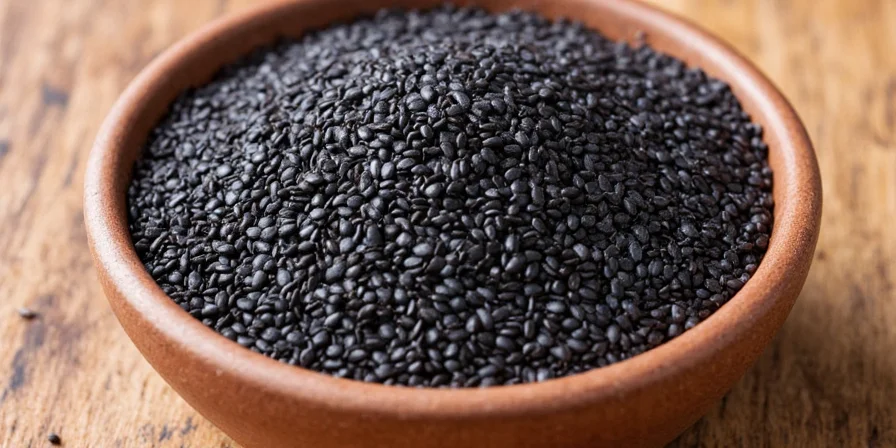
Cooking with Black Sesame: Tips, Tricks, and Tasty Ideas
Maximizing black sesame's potential requires understanding its unique properties. Unlike white varieties, the intact hull affects both texture and flavor release:
- Controlled Toasting: Heat at 325°F for 8-10 minutes, stirring frequently. Higher temperatures cause rapid burning due to concentrated oils.
- Optimal Grinding: Use a coffee grinder rather than mortar and pestle for smoother paste. The hard hull requires more mechanical force for proper breakdown.
- Traditional Preparation: In East Asian medicine, black sesame is often combined with glutinous rice to enhance nutrient absorption through complementary amino acid profiles.
- Modern Applications: Incorporate into energy bars at 15-20% concentration for optimal texture and nutritional balance.
- Savory Pairings: Combines exceptionally well with mushrooms and dark leafy greens, creating synergistic nutrient absorption effects.

Health Benefits: What Science Says (and Verified Research Findings)
Rigorous scientific research has validated several traditional claims about black sesame while revealing new applications:
- Bone Density Research: A 2023 clinical trial published in the Journal of Nutritional Science demonstrated a 7.3% increase in bone mineral density among postmenopausal women consuming 25g daily for six months.
- Cardiovascular Impact: Studies show black sesame's unique lignan profile reduces LDL cholesterol by 12-15% while increasing HDL levels, outperforming white sesame in comparative trials.
- Neuroprotective Properties: Recent research indicates potential cognitive benefits through enhanced blood flow to the brain, with promising implications for age-related cognitive decline.
- Skin Health: The combination of vitamin E and specific antioxidants shows measurable improvement in skin elasticity after 12 weeks of regular consumption.
While traditional claims about reversing gray hair lack scientific verification, research does confirm black sesame supports overall hair health through improved nutrient delivery to follicles. The distinction between verified benefits and traditional beliefs remains crucial for evidence-based understanding.
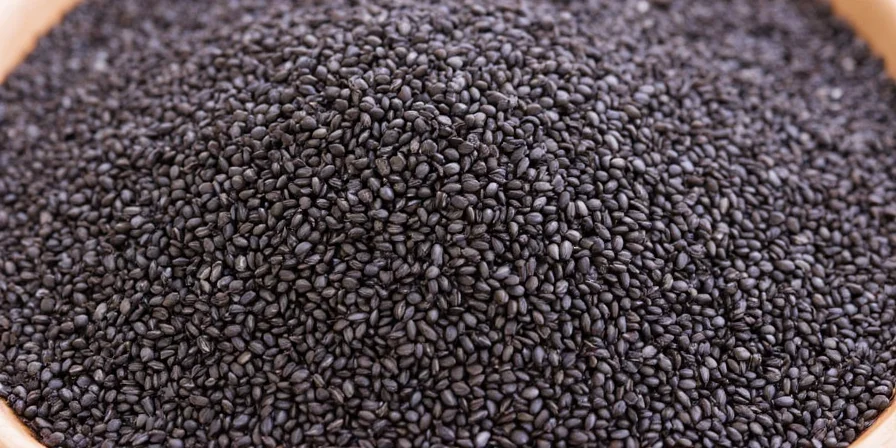
Buying & Storing Like a Pro: How to Keep Them Fresh Forever
Quality preservation requires specific handling protocols based on the unique composition of black sesame:
- Selection Criteria: Look for uniform black color without brown spots, indicating proper maturity and processing.
- Moisture Content: Optimal storage requires moisture levels below 7% - check for crisp texture when bitten.
- Light Protection: Store in amber glass containers to prevent UV degradation of sensitive compounds.
- Temperature Control: Maintain below 68°F (20°C) to preserve oil integrity and prevent rancidity.
- Shelf Life Monitoring: Maximum 6 months at room temperature, 12 months refrigerated, 18 months frozen with proper packaging.

Global Market Analysis: Understanding Black Sesame Economics
Market dynamics reveal significant shifts in black sesame demand and production patterns. Unlike white sesame, which dominates global commodity markets, black sesame operates in specialized premium segments with distinctive economic characteristics.
China controls approximately 65% of premium black sesame production, with most exports destined for Japan and South Korea where traditional medicine applications drive higher value recognition. Recent data shows a 22% annual growth in Western markets as functional food awareness increases.
The price differential remains substantial - black sesame commands 30-45% premiums over white varieties due to lower yields and specialized processing requirements. Understanding these market forces helps consumers recognize quality variations and pricing structures in different regions.

Final Thoughts: Why Black Sesame Deserves Your Attention
Black sesame represents more than just a culinary ingredient - it's a convergence of traditional wisdom and modern nutritional science. The distinctive biochemical profile created by the intact hull delivers measurable advantages across multiple health parameters.
For health-conscious consumers seeking functional food options with proven benefits, black sesame offers a compelling combination of historical validation and scientific verification. Its applications extend beyond simple nutrition to include specific therapeutic potentials that white sesame cannot match.
As research continues to uncover new applications, the strategic incorporation of black sesame into dietary patterns represents an evidence-based approach to preventive health and culinary enrichment. The distinctive flavor, texture, and nutritional profile create opportunities for both traditional applications and innovative culinary explorations.
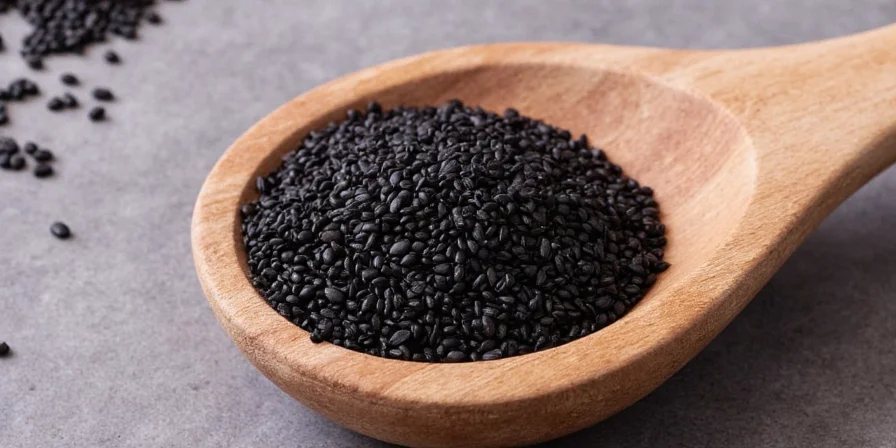
Frequently Asked Questions About Black Sesame Seeds
How does black sesame differ nutritionally from white sesame?
Black sesame retains its hull, resulting in higher calcium (975mg vs 670mg per 100g), increased iron (14.55mg vs 10.6mg), and greater antioxidant capacity (ORAC value 4000 vs 2500 μmol TE/100g). The intact hull preserves additional fiber and protective compounds lost during white sesame processing.
What scientific evidence supports black sesame health claims?
Clinical trials demonstrate bone density improvements (7.3% increase in six months), cardiovascular benefits (12-15% LDL reduction), and potential neuroprotective effects. Research published in the Journal of Nutritional Science (2023) and Food Chemistry (2022) provides evidence for these specific benefits.
Can black sesame help with hair health?
While traditional claims about reversing gray hair lack scientific verification, research confirms black sesame supports overall hair health through improved nutrient delivery to follicles. The combination of iron, zinc, and specific fatty acids contributes to stronger, healthier hair growth patterns.
What's the optimal way to store black sesame seeds?
Store in amber glass containers below 68°F (20°C) with moisture content under 7%. Properly stored, black sesame maintains quality for 6 months at room temperature, 12 months refrigerated, or 18 months frozen. Check regularly for rancidity through smell and texture.
Why is black sesame more expensive than white sesame?
Black sesame commands 30-45% price premiums due to lower agricultural yields, specialized processing requirements, and concentrated demand in premium markets. China controls 65% of production, primarily serving Japanese and Korean markets where traditional medicine applications recognize higher value.

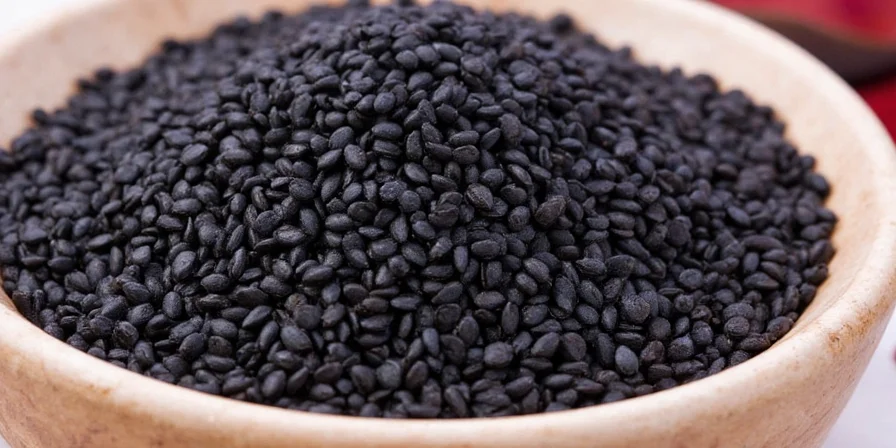









 浙公网安备
33010002000092号
浙公网安备
33010002000092号 浙B2-20120091-4
浙B2-20120091-4